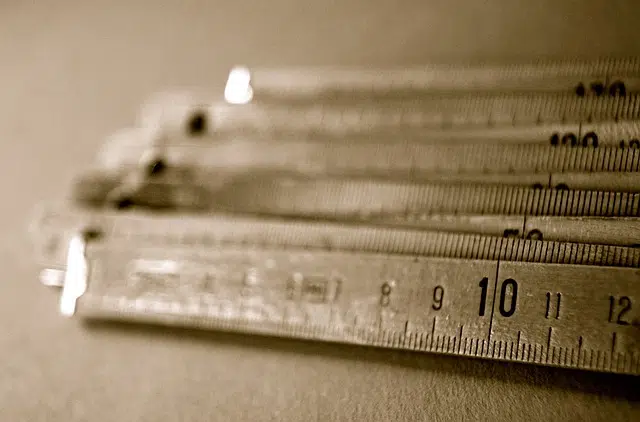
The submultiple of a number fits an exact number of times in it.
The Latin word submultĭplus arrived in Spanish as a submultiple . In the field of mathematics , this is the name given to the number that is contained in another number twice or more, always exactly .
A figure contained in another
A submultiple, therefore, is a figure that is found in another figure an exact number of times. For example: 9 is a submultiple of 45 . If we multiply 9 by 5 , we get 45 as a result. This means that, in 45 , 9 is contained 5 times.
A number is a submultiple of another, in short, when the other contains it exactly two or more times. At the same time, one number is a submultiple of another if this second number is a multiple of the first.
Let's take the case of numbers 2 and 20 . Since 2 is contained 10 times in 20 , 2 is a submultiple of 20 . Likewise, 20 is a multiple of 2 since 2 x 10 = 20 .
Units of measurement
The idea of submultiple also appears in the field of measurement units . There are units that are taken as reference units or principal units : based on them, the largest units are called multiples , while the smallest are known as submultiples .
The primary unit of length is the meter . Following what was expressed in the previous paragraph, there are larger units such as the decameter (dm), the hectometer (hm) and the kilometer (km), which are multiples of the meter. There are also smaller units, such as the decimeter (dm), the centimeter (cm) and the millimeter (mm): they are submultiples of the meter. It is important to note that the same length can be expressed in meters or in any of its multiples and submultiples.
Conversion
One of the topics that are linked to the concept of submultiple is the conversion of units, something that in a simple example could be expressed as "one meter is one hundred centimeters." However, it is far from being a capricious or useless operation: for anyone who requires this data as part of their work, having different units related to each other can mean great savings in time and energy , whether when aiming the smallest values or to perform calculations with them.
Returning for a moment to the example just mentioned, thanks to the existence of the unit centimeter , which is a submultiple of meter , we do not have to say that a memory card measures 0.01 meter, but we can simplify the value to 1 centimeter. To delve deeper into the topic of unit conversion, let's think about some of the submultiples of the second : decisecond, centisecond, millisecond, microsecond, nanosecond, and picosecond. Before venturing to move the position comma, we must understand that between each of these units the number of "jumps" is not the same .

Thanks to unit conversion, we can express the same value in different submultiples.
Between the second and the eleventh, there is a jump; that is, the comma should move just one space to the left. The same happens between the remaining pairs until reaching the millisecond. However, between this last one and the microsecond, there are three jumps, as is the case with the two remaining submultiples. Although in the previous paragraph we said that it can be very convenient to convert a unit to a submultiple to avoid zeros and commas, certain projects require precisely the opposite, and it is important to know how to do it.
If we want to convert 4.13 nanoseconds to seconds, we will have to move the point three steps to microseconds, another three to milliseconds and then three more, to go through the other submultiples. Finally, we will have added nine zeros, the first being the unit and the rest, the decimals: 0.00000000413 second . Of course, with such small numbers it is convenient to express them as powers of 10 with a negative exponent: in this way, we can say that the value is 4.13 x 10 -9 seconds .
